The lithium battery protection IC HKT4056E Produced by Hottech can be Used for a Single Lithium ion Battery

Lithium batteries are widely used in our lives, ranging from aviation to diving equipment, cars robots on the ground, etc. Lithium batteries have high volume density and energy density, and have a single battery voltage of up to 4.2V They are used in mobile phones, chargers, portable electronic equipment, and other fields. Lithium battery has strong charging and discharging ability and long life, which makes it a popular and widely used rechargeable battery product. To ensure the safety of lithium batteries, lithium batteries must have lithium battery protection IC in the application. This product plays an important role in the charging and discharging process of lithium batteries. In this issue, Hottech will explain the working principle and application of lithium battery protection IC products. Taking HKT4056E products produced by Hottech as an example, it is widely used in lithium batteries and other products.

Fig.1
Characteristics of HKT4056E
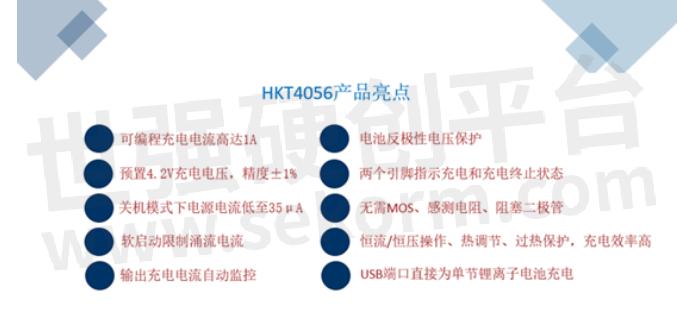
Fig.2
This HKT4056E is produced by Hottech Dongguan Factory. It is a complete CC (constant current) /CV (constant voltage) linear charger integrated circuit product, which is suitable for a single lithium-ion battery. It is specially designed to work within the USB power supply specification.
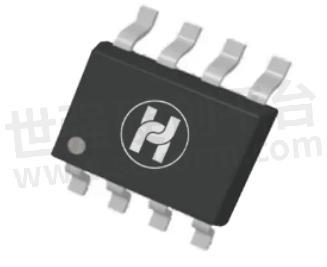
Fig.3
Inside HKT4056E is a P-MOSFET architecture, which does not need external sense resistors or blocking diodes. Blocking diodes generally refer to diodes in clamping protection circuits. In a single-chip switching power supply, the ultrafast recovery diode is generally used as a blocking diode, and a blocking diode is used together with a clamping diode (TVS) in the primary protection circuit.

Fig.4 Function of 8 pins
In terms of overcurrent protection, this product adjusts its charging current through thermal feedback so that its working charging voltage can still be stabilized at 4.2V under high power or high-temperature conditions. The charging current can be accurately controlled by an external resistor.

Fig.5
When the charging current drops to 1/10, the product automatically terminates the programmed value after the charging cycle reaches the final floating charge voltage. The floating charge voltage is the voltage that the battery maintains after being fully charged, and the capacity is maintained by compensating the self-discharge of the battery. The voltage may be kept constant throughout the operation of the battery or may be kept at a specific charging stage of the charger. With the change in battery chemistry and structure and environmental temperature, the appropriate floating voltage will change greatly. With proper voltage and temperature compensation for the battery type, the floating charger can remain connected indefinitely without damaging the battery. When the input power supply (wall adapter or USB supply) is removed, HKT4056E automatically enters the low current state, so that the loss current of the battery is reduced below 1μA, and HKT4056E can reduce the power supply current in the shutdown mode to 35μA.
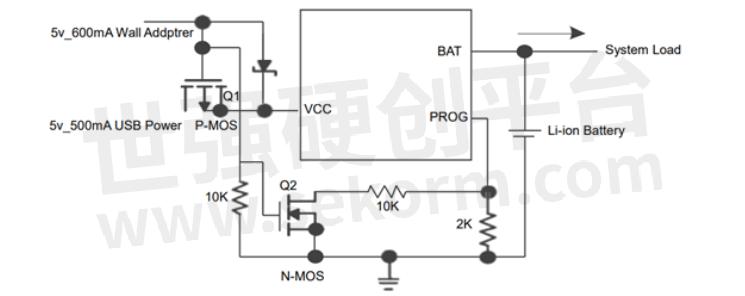
Fig.6
In addition, this product also has the function of output band backflow protection. Because current backflow may lead to voltage fluctuation or overvoltage in the power system, which will affect the normal operation of other equipment, backflow protection is essential. Its trickle charging threshold is 2.9V This trickle charging threshold refers to the situation that the current provided by the charger is less than the minimum charging current required by the equipment during the charging process, which leads to the failure of normal charging of the equipment. The existence of a trickle charging threshold is to protect the battery of equipment and avoid battery damage or other safety problems caused by excessive charging current. Everyone attaches great importance to the battery life and safety of equipment, and the establishment of a trickle charging threshold is very important for battery charging protection.
In addition, this product also has battery temperature monitoring (a battery temperature sensor is an electronic device for measuring the battery temperature, which is used to monitor the running state of the battery and protect the battery from overheating or supercooling. ), under-voltage locking (that is, when the input voltage is lower than a certain value, the power chip does not work and is in a protective state), automatic charging, and two pins indicate the charging and charging termination state, etc. This product conforms to RoHS standards and does not contain lead, so customers can purchase and use it with confidence.
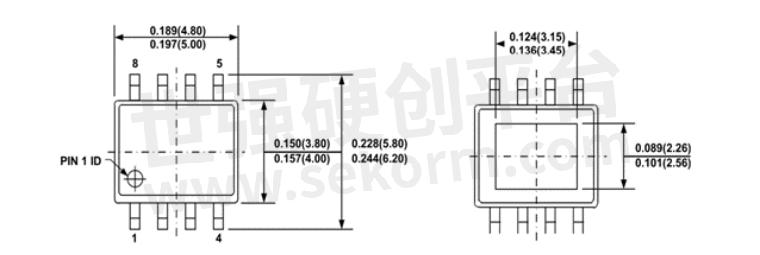
Fig.7
This HKT4056E product is packaged in ESOP-8, which has the characteristics of small size, compactness, small volume, and good weldability. ESOP8 P8 packaging products are suitable for miniaturization and other portable devices, especially convenient charging devices. This product is widely used in communication, industry, consumer electronics, and other fields.
Application of HKT4056E
HKT4056E has excellent product performance, and the product is stable and reliable. It can be used in mobile phones, Bluetooth devices, charging devices, charging stands, and wearable products.
As a CC (constant current) /CV (constant voltage) linear charger product, HKT4056E charges the battery through an internal MOSFET, which can provide a charging current of up to 1 A when used in a single lithium-ion battery. When the voltage of the VCC pin rises above the UVLO level, the charging cycle begins, the current setting resistor is connected from the PROG pin to the ground, and the CE pin is pulled above the chip enable threshold. The CHRG pin outputs a logic low level, indicating that the charging cycle is in progress. At the beginning of the charging cycle, if the battery voltage is lower than 2.9V, the charging will enter the pre-charging mode, so that the battery voltage can reach a safe charging level. When the voltage on the BAT pin is higher than 2.9 V, the charger enters the fast charging CC mode. In CC mode, the charging current is set by RPROG.

Fig .8
When the battery approaches the regulated voltage of 4.2V, the charging current begins to decrease, and HKT4056E enters CV mode. When the current drops to the charging termination threshold, the charging cycle ends, and the CHRG pin is in a high impedance state, indicating that the charging cycle ends and the STDBY pin is pulled low. The charging termination threshold is 10% of the current in CC mode.

Fig.9
How does HKT4056E restart the charging cycle? Please remove the input voltage and reapply or temporarily force the CE pin to 0V. When the voltage at the BAT pin is lower than the charging threshold, the charging cycle is automatically restarted. When the input voltage does not exist or the input voltage is lower than VBAT, the charger enters the sleep mode and the battery leakage current drops to less than 3μA. This greatly reduces the current consumption of the battery and increases the standby time. The charger can be turned off by forcing the CE pin to GND.
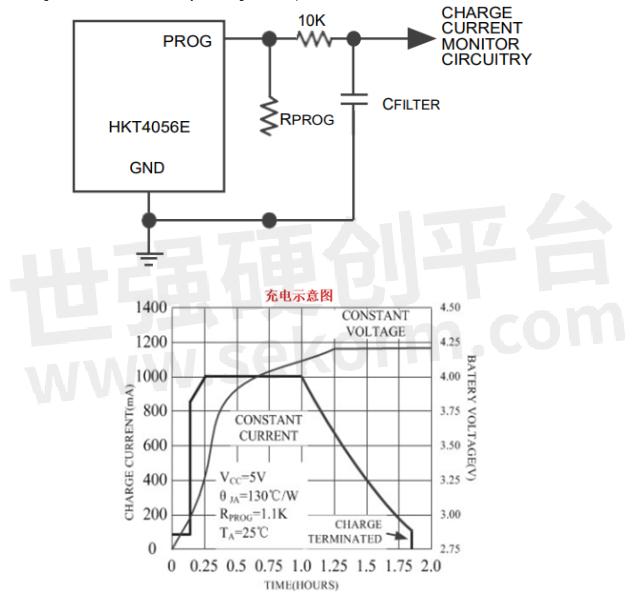
Fig.10
HKT4056, a linear power IC product produced by Hottech, has stable performance and many applications. It has been well-verified by customers and can meet the application needs of many customers.

Fig.11
- +1 Like
- Add to Favorites
Recommend
- Review of Hottech Munich (Shanghai) Electronics Show
- Hottech Classic Discrete Devices and Integrated Circuit Products
- Great News: Hottech Won The Invention Patent Certificate for “a High-frequency and High-current Rectifier“
- A Professional Splitters Manufacturer Hottech Appeared at Shenzhen International Semiconductor Exhibition
- Guangdong Hottech Industrial Co., Ltd. Won the National “High-tech Enterprise“ Recognition
- Shenzhen Hottech Won The Recognition of Specialized, Special and Innovative SMES in 2022
- Application of Hottech NMOS Products in Electric Two-wheeled Vehicles
- Hottech‘s “Linear Lithium-ion Battery Charging Management Chip“ Won The National Invention Patent Certificate
This document is provided by Sekorm Platform for VIP exclusive service. The copyright is owned by Sekorm. Without authorization, any medias, websites or individual are not allowed to reprint. When authorizing the reprint, the link of www.sekorm.com must be indicated.





























































































































































































































































































































































































































































































































































































































































































































































































































































































